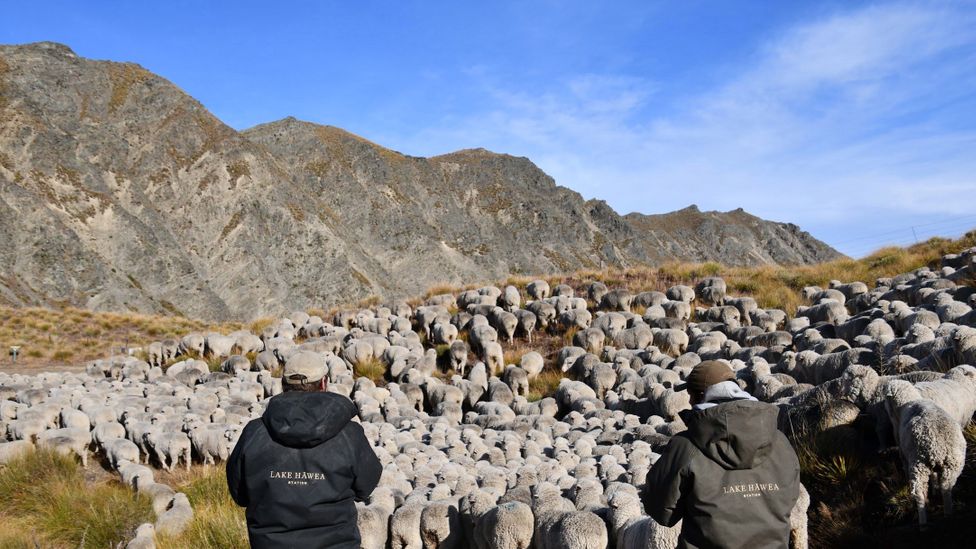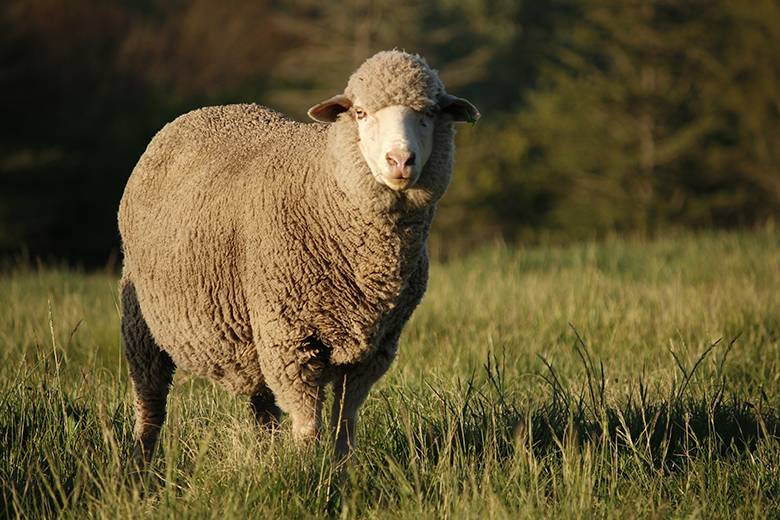While building their fledgling fashion brand, environmentally minded Edzard van der Wyck and Michael Wessely confronted a deluge of sustainability claims about different textiles. "We looked at all types of fibers from cashmere to pineapple skin," says Wessely. But they often found barriers in the way materials were produced. Bamboo, for example, while biodegradable, often goes through intensive chemical manufacturing processes. Pineapple production typically uses large amounts of agrochemicals and is usually grown in monoculture. They were looking for a fabric with sustainability credentials that stood up to scrutiny, not just in carbon emissions but also in its impact on biodiversity, pollution, recyclability, and the communities producing it. They initially suspected the ideal fabric might be found on the more innovative end of the spectrum, exploring materials that were relatively new to fashion. But in 2018, Van der Wyck and Wessely turned their attention to a much, much older material. They met regenerative sheep farmers who "wanted to bring about radical change" to their industry, Wessely says. Impressed with farmers' convictions and the technical and environmental benefits they claimed their products offered, they landed on their raw material of choice: regenerative wool. "The real answer came in the form of an ancient material, albeit sourced and treated in a pioneering way," says Wessely.
Read Also: Jamie Foxx is hospitalized after ‘medical complication
The regenerative approach seeks to replicate what happens in the wild, where animals roam as they graze to find new sources of food and avoid predators, allowing grasslands to heal
A year later, they established Sheep Inc, which claims to be the world's first "carbon-negative" fashion brand. The London-based brand factors farming (including methane, sheep farming's main source of emissions), manufacturing, packaging, and transport into its analysis, according to a report from independent certifiers, Carbon Footprint. However, this figure doesn't include home energy emissions from the team's remote working nor other digital emissions, although these would likely be low compared to emissions from farming wool. Sheep Inc's methods to keep its environmental impact low include using solar-powered knitting machines, sorting clothes in a solar-powered warehouse, and a plastic-free supply chain. Customers can also return items to Sheep Inc for mending and repair. Experts in sustainable fashion have praised the company's efforts. "This is a brand after my own heart: championing regenerative natural fibers, renewable energy, responsible production with a fully traceable supply chain," says independent sustainable fashion consultant Lucianne Tonti. "They are proof of the concept that it is possible to make beautiful clothes with a positive environmental impact." The fashion industry is responsible for between 8 and 10% of global greenhouse gas emissions, more than aviation and shipping combined. Some 70% of fashion's emissions come from its supply chains, concentrated in raw material production, processing, and preparation. This was why carefully selecting raw material suppliers was so crucial to Sheep Inc's process, says Wessely.

Wool is viewed as somewhat of a wonder fabric in the fashion industry because it is hardier than most fibers, requires less washing, and is recyclable, Tonti says. "It's strong, elastic, and has a waxy coating so it doesn't stain easily, and it's odor resistant." It is also flame-retardant, has anti-bacterial properties, and can absorb up to 30% of its weight in water, she says. When wool returns to soil or water, it biodegrades, unlike petroleum-based fabrics such as polyester. (Read more about fashion's colossal waste problem). This makes it a strong contender for sustainable clothing that lasts consumers decades. But conventional wool production remains far from climate-friendly; sheep emit methane, which is 28-36 times more potent than CO2 over a 100-year period. Conventional wool farming often uses set stock grazing, where animals sit in the same paddocks for long periods which can lead to desertification, biodiversity loss, and soil erosion. In places like South America, New Zealand, and Australia, it is more common for sheep to roam but chemical fertilizers are commonplace and without adaptive management practices, conventional sheep farming can lead to the same overgrazing issues as set stock grazing including water pollution, soil erosion, and desertification.
Wool is viewed as somewhat of a wonder fabric in thSheep Inc's founders say their regenerative farming practice can help make fashion more sustainable, and even help absorb more carbon from the atmosphere than is released during farming, making the practice carbon negative. The firm is part of a small movement of brands such as Stella McCartney and A New Sweden who are adopting these practices for their wool. The regenerative approach seeks to replicate what happens in the wild, where animals roam as they graze to find new sources of food and avoid predators, allowing grasslands to heal. Fertilization from the sheep's manure means there is little need for synthetic fertilizers. Unused paddocks are rewilded, and there is no tillage. The company sources its merino wool from Lake Hāwea Station, which was named New Zealand's first "carbon negative" farm in 2019 by carbon footprint certifiers Toitū. Running on renewable energy, the farm claims to have turned itself into a carbon sink by pulling emissions from the atmosphere through native forest restoration. Lake Haweā Station's most recent report says 4,958 tonnes of CO2 equivalent (CO2e) were sequestered from 2019 to 2020. With 2,538 tonnes of CO2e per year emitted from the farm (78% of which is methane), it says this results in a net carbon sink figure of 2,420 tonnes CO2e – equivalent to taking over 500 cars off the road.

The farm says that additional carbon is also sequestered through soil regeneration, which scientists say has significant carbon sequestration potential, but due to New Zealand's carbon accounting stipulations, the soil does not yet factor into its calculations. Gwen Grelet, an ecologist and senior researcher at Manaaki Whenua (Landcare Research), a New Zealand government research institute, recently conducted a white paper on regenerative agriculture in New Zealand. She feels the efforts of Lake Hāwea Station are "truly regenerative". "What is extraordinary is that wool production is done in such a way that it supports the restoration of native biodiversity," she says. "If all wool was produced regeneratively, it could make a big difference for the climate, because vast areas of land currently support sheep grazing."
Sheep Inc claims that the absorption of CO2 via regenerative farming of its products more than cancels out the warming impact of the methane emissions from the sheep on these farms. Whereas 1kg (35oz) of conventionally sourced wool might release over 25 kg of CO2e emissions, Sheep Inc says its wool on average leads to the sequestration of 14kg CO2e. It's not the only company making such claims. A 2020 Australian pilot study conducted by the marketing body for the wool industry, Woolmark, says 11 small and medium-sized farms involved in regenerative wool practices sequester an overall 1,539 tonnes of CO2e per year after other emissions have been taken into account, maintaining 80% ground cover over 13 years. Alongside the potential for capturing CO2 using regenerative practices, Grelet adds that preliminary evidence suggests they may also reduce the emissions of methane itself from sheep farming, through methane capture in soils or reduction of methane emissions from sheep. However, alone these reductions of methane are "likely not enough to counter methane emissions by sheep", she adds.




